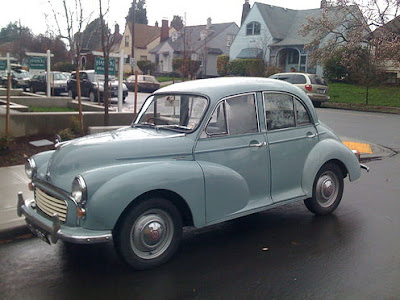Morris Minor today Parts 1
Saturday, January 29, 2011
10:50 PM
,
1 Comment
ป้ายกำกับ: Article , Autos , Cars , Cars Article , Classic Cars , Classic Cars Article , Club , Minor 1000 , Morris Marina , Morris Minor , Morris Minor 1000 , Morris Minor Cars , Morris Minor Classic Cars , New
ป้ายกำกับ: Article , Autos , Cars , Cars Article , Classic Cars , Classic Cars Article , Club , Minor 1000 , Morris Marina , Morris Minor , Morris Minor 1000 , Morris Minor Cars , Morris Minor Classic Cars , New
Morris Minor Classic Cars
Morris Minor today Parts 1
Morris Minor Classic Cars
Morris Minor today Parts 1
Morris Minor
Today the Morris Minor and 1000 are among the best served classic family-sized cars in the old vehicle movement and continue to gain popularity. The enduring affection for the "Moggie" (also a common British nickname for an undistinguished cat, or a Morgan) or "Morrie" (as it is often known in Australia and New Zealand) is reflected in the number of restored and improved Morris Minors currently running in Britain, Australasia and in India. In addition to more powerful engines, desirable improvements necessitated by the increase in traffic density since the Minor was withdrawn from volume production include the replacement of the original equipment drum brakes with discs. Other important upgrades include the 1,275 cc (77.8 cu in) version of the A-series engine, derided by Morris Marina enthusiasts as a key reason why many Marinas were scrapped. Top Gear presenter Jeremy Clarkson once stated that the Morris Minor is Britain's Volkswagen Beetle.
Related : Morris Minor today Parts 1 By Guide ~ Morris Minor today Parts 1 , Morris Minor Classic Cars


















































